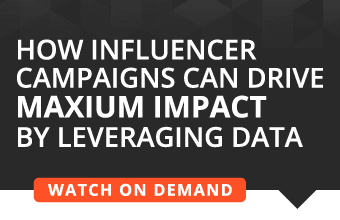Influence is a lovely word.
Brands that don’t have it want it, and brands that have it, well, they’re golden.
But what does it mean?
Ask any PR department or agency if they have an “influential” top tier media list they work from, chances are very good they’ll say, “Of course!” and pull out a list of the reporters and editors that are most likely to cover them. Whether the media outlets for which they write are read by their target audiences — never mind influencing behavior — is all too often never even considered.
But the truth is, if your friendly reporter has little ability to change the opinions or behaviors of the people that matter to you and your brand, you’re wasting your time.
The Conclave on Social Media Measurement Standards has defined influence as “the ability to cause or contribute to a change in opinion or behavior,” and the term key influencer as “a person or group of people who possess greater than average potential to influence.”
Few PR people know whether their efforts are changing any minds or purchase patterns.
So, while their colleagues on the marketing side are defining “influential” as driving sales or claiming market share, PR people see influence in terms of media impressions and frequency of coverage. Sadly, it’s just one more reason why PR has such a hard time being taken seriously.
But first, a little background.
The reason why reach and frequency became equated with influence is that, three decades ago, advertisers started using data from Nielsen and subscription databases to determine the extent to which a media outlet “reached” a demographic.
Advertisers and their agencies could then match profiles of likely customers with the TV shows, magazines, or newspapers that those likely customers were watching, subscribing to, or reading. Then they would correlate the reach and frequency data with purchase behavior to show efficacy.
But today, the same advertisers have learned that word of mouth, recommendations, and social networks have proven to be far more influential on behavior than beating people over the head with repetitive messages. With data from social media profiles, search engine usage, and purchase behavior, it is far easier and more accurate to reach your target audiences with programmatic messages that automatically show up wherever and whenever they use the internet.
But programmatic advertising has its downsides. Procter & Gamble recently pulled most of its programmatic digital spending because of brand safety concerns and “ineffective” ads. According to Finance Chief Jon Moeller, “Clearly, we don’t need to be spending money that is seen by a bot and not a person…or on ads that are placed in inappropriate places, and that’s why you see a significant reduction.”
All this provides a golden opportunity for PR…if it can get over its aversion to metrics and start using data to connect the dots between activities and actual changes in opinions or behaviors.
There is no reason why PR can’t use the same data mining techniques that helped shape the opinions of British voters towards Brexit and elect the president of the United States.
Those techniques start with understanding what influences your target audiences. Which means PR people will have to talk to salespeople, marketing folks, and their research teams (if they have one), and yes, maybe even customers and prospects to find out what keeps them up at night. Most importantly, PR needs to know what sources they go to when they are in the research and consideration phases of their decision-making process.
Armed with that knowledge, and with media analysis data that will reveal what those reporters and outlets actually cover, you can build a media list that has meaning and then, ultimately, tie actions to influence. Real influence.








